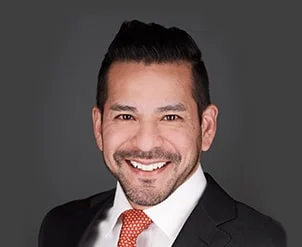Federal Court Closes Multiple Filing Loophole

The 2005 Bankruptcy Code reforms substantially changed the procedure regarding the automatic stay and eviction proceedings, and the law on this point is still rather uncertain. A New York bankruptcy court recently tried to make sense of the new rules, and since the judge interpreted federal law, the decision could impact bankruptcies in other states, including Illinois and Indiana.
In In Re Bender, the debtor filed a subsequent bankruptcy within a year of a Chapter 13 dismissal with prejudice, thus limiting the automatic stay in the new bankruptcy. Since the law is unsettled, some courts have ended the stay only with respect to the debtor (majority view) while others have held that the stay terminates entirely (minority view). The court essentially rejected both views, shifting the burden onto the debtor to show that the stay should remain in effect for certain property.
In this case, the debtor was about $40,000 behind on rent payments, and the court allowed the lessor to proceed with eviction efforts despite the tenant’s bankruptcy filing.
Limits on the Automatic Stay
Section 362 of the Bankruptcy Code basically makes it illegal for moneylenders to contact debtors regarding past-due accounts. As the name implies, the automatic stay normally becomes effective as soon as debtors file their petitions, as they do not need to prove fraud, bad faith, or anything else. In addition to collection phone calls and other contacts, the automatic stay applies to repossession efforts, foreclosure proceedings, lawsuits, and wage garnishment.
Because it is such a powerful tool, Congress wrote some limits into Section 362. If the debtor filed a previous bankruptcy within the last year that was dismissed “with prejudice,” which means for cause, the court presumes that any subsequent cases filed within the next year are bad-faith efforts to frustrate creditors. To overcome this presumption, the debtor must file a motion to extend or impose the stay. The court will consider several factors:
- Number of Prior Filings: Some people try to circumvent the automatic stay limits by filing different petitions under different names; for example, they’ll use a spouse’s name or a corporate name.
- Reason for Dismissal: The court may give the debtor leeway if a previous lawyer’s mistake, like a missed deadline, triggered the prior dismissal.
- Changed Circumstances: This is the big one, because if the debtors are in basically the same situation as they were before, the court is extremely unlikely to grant relief.
If debtors have one dismissal on their records in the past year, the automatic stay only lasts 30 days; if debtors have two or more dismissals during that period, the automatic stay is presumptively not available.
Renters and the Automatic Stay
Most evictions are multi-step processes, because after the landlords obtain judgements for unpaid rent, they must then obtain writs of possession.
Typically, for the stay to halt eviction proceedings, the petition must be filed before the landlord obtains a judgement. If the petition is filed after that, the landlord can normally still obtain a writ and continue the eviction process. As for subsequent filed petitions, some districts still allow the stay if debtors deposit the entire amount of back rent with the clerk and continue on-time payments.
Count on Experienced Lawyers
For prompt assistance from an experienced bankruptcy lawyer in Chicago, contact the Bentz Holguin Law Firm, LLC today, because without decisive action, debt problems normally get worse instead of better.
Resources:
law.cornell.edu/uscode/text/11/362
esquireglobalcrossings.com/files/2017/01/Bender-Decision.pdf


